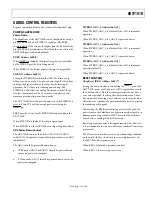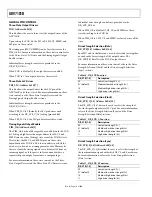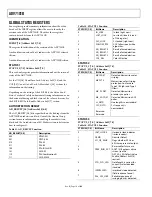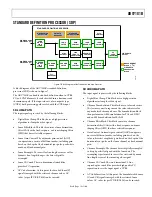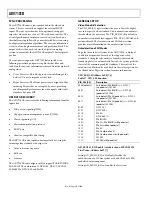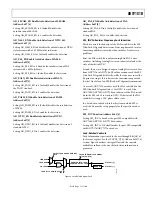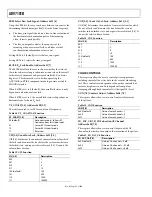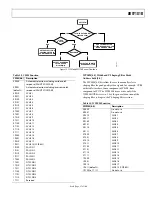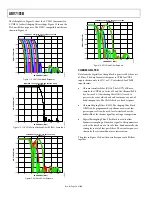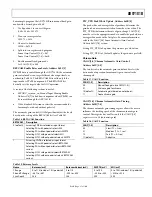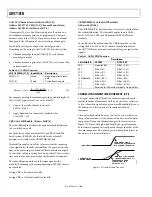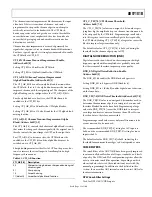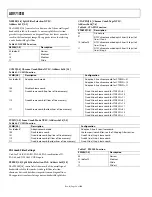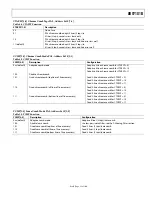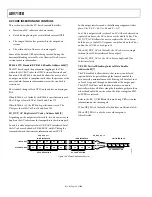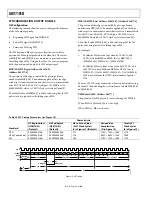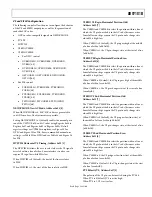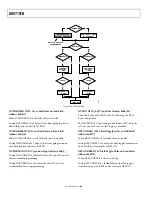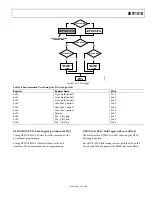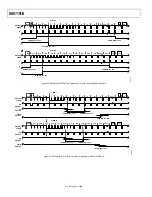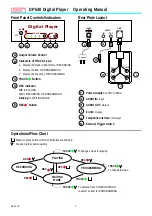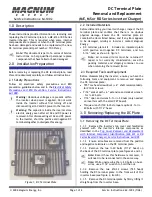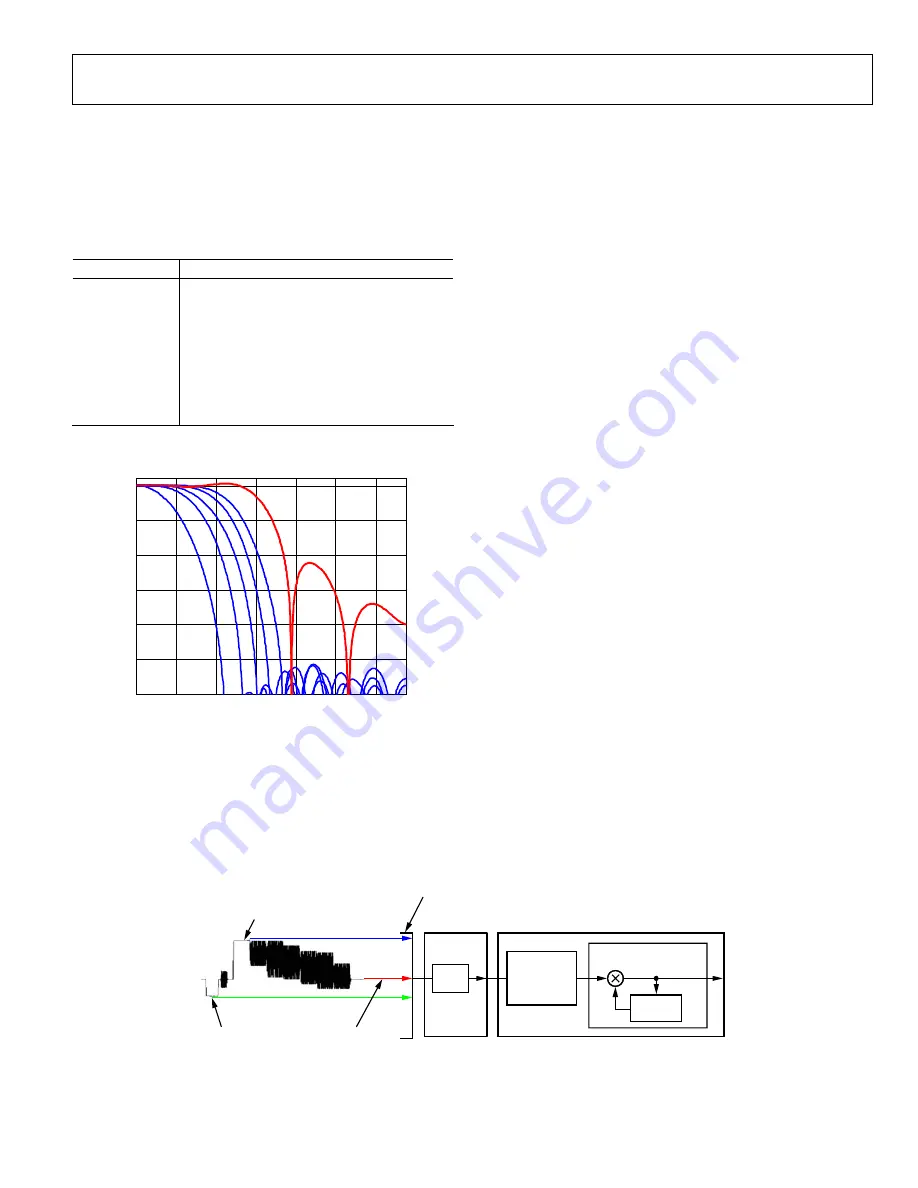
ADV7181B
Rev. B | Page 29 of 100
CSFM[2:0] C Shaping Filter Mode, Address 0x17[7]
The C shaping filter mode bits allow the user to select from a
range of low-pass filters, SH1 to SH5 and wideband mode, for
the chrominance signal. The autoselection options automati-
cally select from the filter options to give the specified response;
see settings 000 and 001 in Table 31.
Table 31. CSFM Function
CSFM[2:0] Description
000 (default)
Autoselect 1.5 MHz bandwidth
001
Autoselect 2.17 MHz bandwidth
010 SH1
011 SH2
100 SH3
101 SH4
110 SH5
111 Wideband
mode
0
–10
–20
–30
–40
–50
–60
0
5
4
3
2
1
6
FREQUENCY (MHz)
COMBINED C ANTIALIAS, C SHAPING FILTER,
C RESAMPLER
ATTE
NUATION (dB)
04984-015
Figure 15. Chroma Shaping Filter Responses
Figure 15 shows the responses of SH1 (narrowest) to SH5
(widest) in addition to the wideband mode (in red).
GAIN OPERATION
The gain control within the ADV7181B is done on a purely
digital basis. The input ADCs support a 9-bit range, mapped
into a 1.6 V analog voltage range. Gain correction takes place
after the digitization in the form of a digital multiplier.
Advantages of this architecture over the commonly used
programmable gain amplifier (PGA) before the ADC include
the fact that the gain is now completely independent of supply,
temperature, and process variations.
As shown in Figure 16, the ADV7181B can decode a video
signal as long as it fits into the ADC window. The components
to this are the amplitude of the input signal and the dc level it
resides on. The dc level is set by the clamping circuitry (see the
Clamp Operation section).
If the amplitude of the analog video signal is too high, clipping
can occur, resulting in visual artifacts. The analog input range
of the ADC, together with the clamp level, determines the
maximum supported amplitude of the video signal.
The minimum supported amplitude of the input video is
determined by the ADV7181B’s ability to retrieve horizontal
and vertical timing and to lock to the color burst, if present.
There are separate gain control units for luma and chroma data.
Both can operate independently of each other. The chroma unit,
however, can also take its gain value from the luma path.
The possible AGC modes are summarized in Table 32.
It is possible to freeze the automatic gain control loops. This
causes the loops to stop updating. It also causes the AGC
determined gain at the time of the freeze to stay active until the
loop is either unfrozen or the gain mode of operation is
changed.
The currently active gain from any of the modes can be read
back. Refer to the description of the dual-function manual gain
registers, LG[11:0] Luma Gain and CG[11:0] Chroma Gain, in
the Luma Gain and the Chroma Gain sections.
ANALOG VOLTAGE
RANGE SUPPORTED BY ADC (1.6V RANGE FOR ADV7181B)
DATA PRE-
PROCESSOR
(DPP)
ADC
SDP
(GAIN SELECTION ONLY)
MAXIMUM
VOLTAGE
MINIMUM
VOLTAGE
CLAMP
LEVEL
GAIN
CONTROL
04984-016
Figure 16. Gain Control Overview

